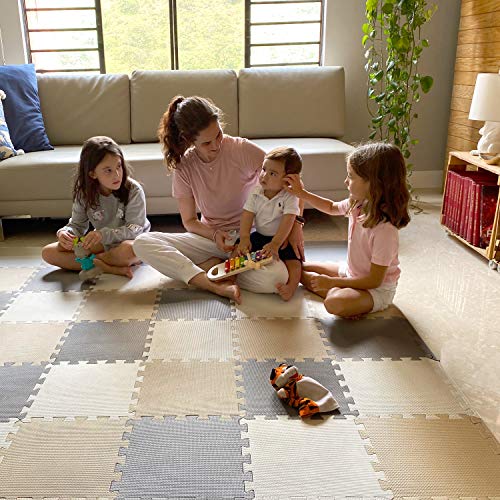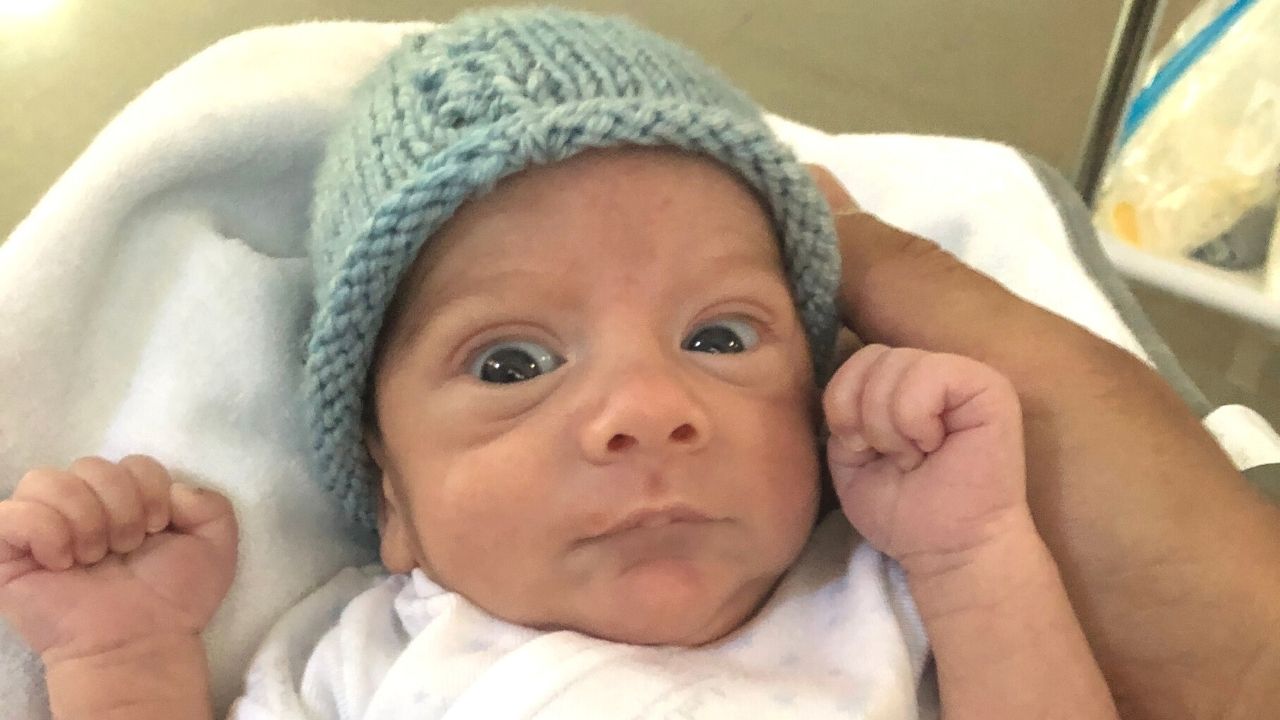Baby’s First Year: Week 6
- October 21, 2020
- by Melissa Lawrence
- 6-Week-Old Baby: Growth & Development
- New baby pediatrician appointments
- Babies Growth during the First Six Months
- Activities to Do with a Newborn Baby
- Baby’s First Smile
- How is Mom doing at 6 Weeks
- How to do Pelvic Floor Exercises after Baby
- How to Lose the Weight after Baby
- How to Lose the Baby Weight While Breastfeeding
6-Week-Old Baby: Growth & Development
New baby pediatrician appointments
The American Academy of Pediatricians (AAP) recommends babies get regular checkups at birth, 3-5 days after birth, and then at 1, 2, 4, 6, 9, 12, 18, and 24 months. So make sure to schedule your two-month appointment at your baby’s one-month appointment, or do so now.
Babies Growth during the First Six Months
Your doctor will continue to track your baby’s growth against other similarly aged babies, most likely against the range established by the World Health Organization. For the first six months of life, your baby will gain approximately 5-7 ounces (140-200 grams) per week. So figure that by week 6, your baby will have gained 30-42 ounces or 1.8-2.6 pounds (840g – 1.2 kilos).
Activities to Do with a Newborn Baby
Your baby will still be fascinated with his fingers and toes and you’ll see them stretching out their limbs and admiring themselves. Lock fingers with your baby to allow them to practice their grasping reflex. Put your baby down for Tummy Time to strengthen their upper back and neck several times a day, remembering to never leave them unattended on their stomach. Talk and read to your baby — and mimic their cooing sounds back to them — to stimulate language development.

Fisher-Price Baby Playmat Deluxe Kick & Play Piano Gym & Maracas with Smart Stages Learning Content, 5 Linkable Toys & 2 Soft Rattles


Baby Einstein 4-in-1 Kickin' Tunes Music and Language Play Gym and Piano Tummy Time Activity Mat


Nuby Reversible Baby Floor Mat - Foldable and Lightweight Baby Play Mat for Floor - Easy Storage and Travel - Rainbow


Blissful Diary Baby Play Mat, 71x59 Inch Extra Thicker & Large Baby Mat for Floor, Soft Cushioning Foam Play Mats for Babies and Toddlers, Foldable Washable Baby Playpen Mat Crawling Mat, Boho Design


UANLAUO Foldable Baby Play Mat, Extra Large Waterproof Activity Playmats for Babies,Toddlers, Infants, Play & Tummy Time, Foam Baby Mat for Floor with Travel Bag (Bear(79x71x0.4inch))


Infantino Foldable Soft Foam Mat, Extra Large Double-Sided Cushioned Portable Play Mat with Fold-Up Sides, Non Slip Crawling & Playing for Infants and Toddlers, Multicolor


Blissful Diary Baby Play Gym & Activity Mat, Oversize Leaf Shaped Baby Play Mat w 6 Detachable Toys, Tummy Time Mat Promote Motor Skills & Sensory Development Mat, Newborn Infant Baby Essentials Gift


Baby Gym Play Mat, 8-in-1 Tummy Time Mat & Ball Pit with 6 Toys, Washable Baby Activity Play Mat for Visual, Hearing, Sensory, Motor Development, Baby Toys Gift for Toddler Infant 0-3-6-9-12 Months


MioTetto Soft Non-Toxic Baby Play Mat | Toddler Playmat | Colorful Jigsaw Puzzle PlayMat | 16+2 Bonus Squares Foam Floor Mats for Kids & Babies | EVA Foam Interlocking Tiles for Gym, Nursery, Playroom


79x71 Foldable Play Mat for Baby, Extra Large Non-Toxic Tummy Time and Crawling Mat, Thick Foam Play Mat, Reversible Portable Baby Floor Mat for Infant, Toddler
Baby’s First Smile
Babies begin to emit a “social smile” — an intentional gesture unlike smiles they might do in their dreams or when passing gas — at around six weeks of age. As innocent as a smile might seem, it actually is a sign that your baby’s brain development is continuing and that their communication skills are on track. As a general rule, the more premature a baby is, the longer they will take to catch up. So if you have a premie, give them a bit more time.
How is Mom doing at 6 Weeks
Your 6 Week Post Baby OBGYN Appointment
This week, you should have your six-week post-baby OBGYN appointment, otherwise known as your postnatal appointment or six-week check. Your OB will ask you if you have had your period and about your vaginal bleeding post-birth. If you had an episiotomy, they will check your stitches and perineum to make sure they have healed correctly. They’ll check your tummy to make sure your uterus has gone back to its size and if you have had a C-section, they will check your scar. They might advise you to start doing pelvic floor exercises if you haven’t started already.
How to do Pelvic Floor Exercises after Baby
There are various accessories you can use for pelvic floor exercises, but the simplest thing to do is to first familiarize yourself with those muscles by stopping the flow of urine (which is not something you should do often because it can be harmful to the bladder). You can also imagine sitting and squeezing on a marble. Sit comfortably and, without holding your breath or squeezing your buttocks or bladder, squeeze those muscles for three seconds 10 to 15 times. Repeat this three times a day. Over time, you can notice results but you should continue to do these exercises.


TINRIEF Thigh Master Hip Trainer Kegel Exerciser, Pelvic Floor Trainer, Kegel Trainer for Postpartum Rehabilitation, Trimmer Inner Thigh, Thigh Toner Workout (Purple)


Thigh Master Kegel Exercise Products for Women Pelvic Floor Muscle Trainer Inner Thigh Hip Exercise Equipment Bladder Control Devices Postpartum Rehabilitation Pelvic Floor (Pink)


Kegel Sports Products/Female Thigh Master/Thigh Trainer/Pelvic Floor Muscle Trainer/Inner Thigh Toner/Postpartum Rehabilitation Pelvic Floor/Family Fitness Sports Equipment (Pink)


Hip & Pelvic Trainer Kegel Exerciser, Home Gym Yoga Training for Women, Inner Thigh Exerciser, Postpartum Pelvic Repair Pelvic Floor Muscle Exerciser, Arm Butt Exercise Trainer Weight Loss


Pelvic Hip Trainer Thigh Master Kegel Exercises Device for Women Men Arms Legs Buttocks Strength Training Clip Sculptor Machine Applicable for Yoga Floor Muscle and Inner Thigh Training Home Gym


Your Best Body after Baby: A Postpartum Guide to Exercise, Sex, and Pelvic Floor Recovery (Pelvic Floor Physical Therapy Series)


PELVIC FLOOR EXERCISES FOR PREGNANCY AND POSTPARTUM HEALTH: Quick and Simple Workouts to strengthen your pelvic floor muscles, heal pelvic girdle pains, back pains, urinary incontinences


Hip Trainer Kegel Exerciser Pelvic Floor Muscle and Thigh Trainer for Correction Buttocks Leg Arm Postpartum Rehabilitation


JevenFening Thigh Master Hip Trainer Kegel Exerciser, Pelvic Floor Trainer, Portable ∠25° Inner Thigh Toner Exercise Equipment for Home/Office, Leg Trainer for Postpartum Rehabilitation


TFCFL Ski Simulator Leg Exercise Equipment, Postpartum Pelvic Floor Muscle Repair Strengthening Training Device, Weight Loss Thin Legs Kegel Exercises with Adjustable Rods
How to Lose the Weight after Baby
All moms worry about getting their body back after a baby. I’ve been through this many times and have gained varying amounts of weight with my five babies. The best thing to do is to stick to a healthy, low sugar diet like the one you followed during pregnancy, and to fit in exercise as soon as you can. Most women lose half of the weight they gained during pregnancy by six weeks after their baby’s birth. At this point, you can seek to lose weight but you want to do this slowly, aiming to lose a pound to a pound and a half a week and avoiding crash diets, cleanses or anything extreme. Getting outside and walking with your baby is a must. Here are some basic tips when it comes to losing weight: do not skip meals; eat many small meals a day; opt for steamed or baked foods over fried foods; cut out sodas and juices and opt for whole fruits; limit sugar, fat, saturated fats and trans fats; opt for whole grains; always eat something for breakfast; slow down when you eat, tasting your food and enjoying it; and keep a water bottle near you and drink frequently. I have gotten in the habit of filling a thermos with ice water and another with fresh mint tea with cinnamon. These keep me hydrated during the day and the thermos keeps the tea hot all day!
How to Lose the Baby Weight While Breastfeeding
For many mothers, breastfeeding — which burns approximately 200-400 calories a day — helps with the weight loss. If you are breastfeeding, you don’t want to consider dieting until at least two months after you have given birth and your breastmilk is well established. At that point, you can follow the dietary tips I’ve outlined above but keep in mind that you are burning calories through the nursing.
When Can I Have Sex after Baby?
At your six-week postnatal appointment, your OB will ask you about birth control and likely give you the go-ahead to have sexual intercourse. You may or may not be anxious to have sex given how you feel after having gone through such monumental changes physically. It is very common to experience fatigue, pain, vaginal dryness, and lack of sexual desire. I had horrible dryness after my first baby. We tried to use a lubricant but to be honest, it was just too difficult for a while and over time it got better. My advice with this is to explain your feelings to your partner and take it slow and ask your partner to be patient. Also, keep your mind open and try to explore alternatives.
Prioritizing your Partner after Baby
A baby brings joy but it can also change your schedule just a wee bit and you want to make sure you find time for your partner too and continue to remind them of how important to you they are. Try to continue to schedule special things: a nice take out dinner, a movie, a walk, whatever you can do. And try to get a babysitter or family member to watch the baby once in a while and dress up and go out so that you still feel like a couple. A happy couple makes for a happy baby — invest in both. I also advise you to learn from my mistakes in one regard: when you act like the expert and get into the “Daddy Doesn’t Do it Right” or your partner doesn’t do it right mentality regarding how your partner deals with the baby, you lose a willing helper. You want to build up your partner’s confidence when it comes to taking care of the baby, rather than presenting yourself as the only one who knows how to do things. So back off a bit, be supportive, and let your partner discover how they want to parent.
Breastfeeding Schedule for a 6 Week Old Baby
Try to make sure your baby eats at least every three hours from the beginning of a feed. This helped my babies to transition to eating less at night. If your baby is extremely sleepy, ask your doctor if you can feed every 3.5 hours. I should note here that having talked myself blue in the face about schedules for the past sixteen years since my eldest Hedley was born, I am finding with Bracey who is now 36 weeks old in terms of gestation, that it works better to feed him every 3.5 hours because even though he is a premie and needs to eat frequently, he is so sleepy that when I try to feed him every three hours he won’t wake up “no matter how hard I try,” to quote Cher.
The AAP still advises on-demand feedings at this stage and experts advise not letting your baby go more than three hours between feedings, so let me pop up the every three-hour feeding schedule again here, but keep in mind that every 3.5 hours might be an easier schedule for you.
- 7am — sleep 8:30-10am.*
- 10am – sleep 11:30-1pm.
- 1pm — sleep 2:30-4pm.
- 4pm — sleep 5:30-7pm.
- 7pm — sleep 8:30-10pm.
- 10pm — sleep 11:30pm-1am.*
- 2am (or when baby wakes up)
- 6am (or when baby wakes up).
*Mom tries to sleep too!
Try to keep your baby awake by changing their diaper and outfit, and to ensure that they are awake, full, and rejecting more food before ending a feed. Remember to empty the breast before going to the next breast so as to give your baby as much hind milk as possible. And try to pump for 5-10 minutes after each daytime feed to stimulate milk production and equalize the amount each breast is producing.
Formula Feeding Schedule for a 6 Week Old Baby
Repeating the information from prior weeks here for your convenience. Formula-fed babies should have 2 to 2.5 ounces of formula for every pound of body weight over a 24 hour period for the first six months of life, which translates to about 20-25 ounces for a 10-pound baby, or approximately 3-4 ounces per feed, depending on the number of feeds per day. Although some experts say you can let you baby go five hours from the beginning of a feed at this stage, I recommend feeding no less frequently than every four hours from the beginning of a feeding, following a schedule that looks something like this:
- 7am — 9am nap
- 11am — 1pm nap
- 3pm – 5pm nap
- 7pm – 8pm bedtime
- 11pm – right back to sleep
- 4am (or when baby wakes up) – right back to sleep
Make sure your doctor approves of having your baby wake up on their own at night rather than having you wake them to feed. Follow these guidelines for cleaning and sterilizing bottles or invest in a bottle sterilizer and warmer.


Dr. Brown's Insta-Feed Baby Bottle Warmer and Sterilizer for Baby Bottles and Baby Food Jars


Baby Bottle Warmer 9-in-1 Multifuntion Breast Milk Warmer, Fast Baby Food Heater & Defrost Warmer with Timer for Twins, LCD Display Accurate Temperature Adjustment, 24H Constant Mode


Larex Double Bottle Warmer, 11-in-1 Fast Baby Bottle Warmer for Breastmilk and Formula, with Timer, Fits 2 Bottles, Accurate Temp Control, Milk Warmer with Thaw, Steri-lizing, Keep Warm, Heat Food


The First Years Baby Bottle Warmer and Sterilizer - Pacifier and Bottle Nipple Sanitizer - Feeding Baby Essentials for Formula or Breast Milk - Holds Multiple Sizes


Baby Bottle Warmer, Grownsy 8-in-1 Fast Milk Warmer with Timer Breastmilk or Formula, Fits 2 Bottles, Accurate Temperature Control, with Defrost, Sterili-zing, Keep, Heat Baby Food Jars Function


Dr. Brown’s Deluxe Electric Sterilizer for Baby Bottles and Other Baby Essentials


Fast Baby Bottle Warmer for Breastmilk and Formula,10-in-1 Functionality Intelligently Heating, Accurate Temperature Control, Sterilizing, Travel-Friendly Design for All Bottle Sizes


GROWNSY Bottle Sterilizer and Dryer, Compact Electric Steam Baby Bottle Sterilizer (Esterilizador de Biberones), Bottle Sanitizer for Baby Bottles, Pacifiers, Pump Parts


Munchkin® Fast™ Baby Bottle Warmer and Sterilizer - Warms in 60 Seconds, Fits Most Bottles and Baby Food Jars, Preserves Nutrients


Philips AVENT Fast Baby Bottle Warmer with Smart Temperature Control and Automatic Shut-Off, SCF358/00
Premature Babies at 36 Weeks of Gestation
You can’t generalize when it comes to premies, but I will share something I’ve noted from having been in the NICU now for six weeks. I always feared giving my babies bottles in the early days until breastfeeding was well established. Premie babies often don’t have the strength to breastfeed so you have to pump and give them a bottle. I see many mothers alternating between time on the breast and bottle feeding. I worried about this with Bracey, who takes the bottle in 20 minutes but it has been taking him up to an hour and a half to nurse. The nurse told me not to worry that he will always prefer the breast. He does seem as happy latching on right now as he is to receive milk through the bottle. We’ll see how that goes.
What are Late Preterm Babies?
“Late preterm” babies born between 34 and 36 weeks account for nearly 75% of all preterm births and 8% of all births in the United States. Many babies born at this stage can go skin-to-skin with their mothers right away but others will need help with breathing for a while. If you have a late preterm baby who is in the NICU and are wondering when they can come home, keep in mind that doctors advise that the size or weight of your baby is not the only relevant factor when it comes to your baby’s readiness to go home. Rather, their breathing, their ability to regulate their body temperature, not having jaundice, and being able to eat well are all factors that the hospital doctors will be evaluating.
Bracey Update
On his six-week birthday, Bracey weighed in at 2.410 kilos. He got the best piece of news he’s had during his short life thus far: tomorrow, he’s coming home. Since Bracey is now maintaining his body temperature and can take bottles and the breast (and has not needed the feeding tube for two days) the doctors feel that he is ready.


Getting Ready for Baby at Home
I’m so excited I don’t know what to do other than freak out that I don’t have everything ready. Yesterday I bought a few more newborn essentials: diapers, wipes, an Avent bottle warmer, and newborn baby slow flow Medela nipples. At this stage with my other babies, I would not have even had a bottle in the house but I am learning to loosen up. Every baby teaches you so much and Bracey has taught me to be more flexible. Can’t wait to see you all next week when I can tell you about Bracey’s first days at home.
Very Well Family
NHS.uk
Medlineplus.gov
Parents.com
Whattoexpect.com



Comments